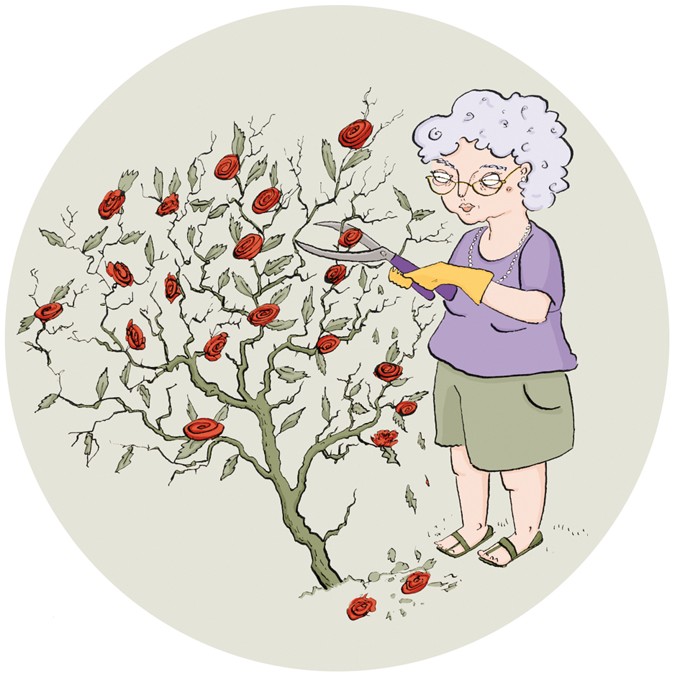- Select a language for the TTS:
- UK English Female
- UK English Male
- US English Female
- US English Male
- Australian Female
- Australian Male
- Language selected: (auto detect) - EN
Play all audios:
You have full access to this article via your institution. Download PDF This is the answer to the clinical puzzle in the 27 January issue of the _BDJ _(Volume 234, page 78). The puzzle was
submitted by Professor Stephen Porter and Professor Stefano Fedele, both of UCL Eastman Dental Institute. ANSWER: This is plasma cell gingivostomatitis (sometimes called circumorificial
plasmacytosis or plasma cell orificial mucositis). The clues are that the gingivae are notably erythematous, swollen and painful. This last feature is not typical of plaque-induced gingival
inflammation. In addition, plaque-induced disease does not give rise to superficial ulceration unless on the free margins (aka acute necrotising ulcerative gingivitis) and rarely will cause
such profound erythema of the attached gingivae. The differential diagnosis might have included acute myeloid (or other) leukaemia but as the full blood cell count was normal this was an
unlikely diagnosis. Plasma cell gingivostomatitis is rare, usually, if not always; it arises in adults of any age or gender and has no identifiable geographic or ethnic links. It manifests
clinically as diffuse areas of erythematous enlargement of the free and attached gingivae, with no particular distribution. In addition, there can be erythematous enlargements of the labial,
buccal, lingual and/or palatal surfaces with possible notable thickening of the palatal mucosa (hard and soft) - this last feature possibly predisposing to a risk or snoring and/or sleep
apnoea. The term circumorificial plasmacytosis actually describes the potential disorder well, as similar disease can arise, completely independent of oral involvement, in the pharynx
(causing dysphagia), larynx (hence possible dysphonia), bronchi (hence dyspnoea/chest pain), vulva, vagina and glans penis (thus local pain, dysuria and dyspareunia). The differential
diagnosis of plasma cell gingivostomatitis can include granulomatous disease (such as Crohn's disease, orofacial granulomatosis and sarcoidosis) but the gingival lesions of such disease
are often salmon-pink in colour and a granular surface. Granulomatosis with polyangiitis (previously termed Wegener's granulomatosis) may give rise to gingival enlargement, sometimes
having a mottled surface akin that of strawberries (hence the term 'strawberry gingivitis') with or without superficial or deep ulceration. Ciclosporin-induced gingival enlargement
(in contrast to that of phenytoin or calcium channel blockers) may have a notably erythematous appearance but may be more evident in the interdental areas rather than the margins of the
gingivae. As noted above acute myeloid (and sometimes other non-solid haematological malignancies) can cause gingival enlargement but it might be expected that there will be other features
of such disease (eg those of anaemia, neutropenia and/or thrombocytopenia). There are of course other causes of gingival enlargement and subsequent risk of plaque-induced gingival
inflammation (for example lipoid proteinosis) - but all are rare. Plasma cell gingivostomatitis has a striking histopathology - a highly dense infiltrate of plasma cells well away from areas
of likely chronic gingival pr periodontal inflammation. Unlike multiple myeloma (and indeed plasmacytoma) the plasma cells are non-identical (polyclonal). Thus, to confirm the diagnosis of
plasma cell gingivostomatitis this poly-clonality must be confirmed either with immunohistochemistry or polymerase chain reaction (PRC) - that demonstrate that the plasma cells are
generating both kappa and lambda light chains. The cause of plasma cell gingivostomatitis is not known. Early notions were that it was driven by confectionery have not stood the test of time
and other suggested precipitants have included various chewing gums, toothpaste of various formulations (eg 'herbal', 'mint', 'high surfactant content'),
Colocasia (arbi) leaves and Khat. But as exposure to some of these (for example, Khat) will generally follow an ethnic or geographic distribution no one factor explains all instances of this
disorder - and indeed the cause is rarely, if ever, truly established. The management of plasma cell gingivostomatitis varies between patients. As a precipitant is usually not identified
the treatment is almost always directed towards reducing the pain and/or swelling - and ensuring the patient is able to maintain good plaque control (as required for all individuals to
reduce the risk of plaque-induced hard and soft tissue disease). Topical corticosteroids of various types, systemic corticosteroids and/or corticosteroid-sparing agents have each been used
for the management of this disorder but while the reported results of small group studies have pointed towards benefit in practice this is a challenging disorder to manage, and the goals
often become reducing pain and ensuring the maintenance of good plaque control. The disorder is probably life-long although is not potentially malignant nor a harbourer of rare plasma-cell
dominated disorders such as multiple myeloma or IgG4-related disease. An association with Sjögren's syndrome has been proposed - based upon observations of one patient. Plasma cell
gingivostomatitis is a conundrum - not so much because it is difficult to diagnose - but as its cause is not known and the management challenging. Oral health care providers are central to
the care of affected patients by virtue of referring patients to appropriate specialists, them then arranging the appropriate confirmatory investigations and then providing the patient and
the referring clinicians with appropriate information on the disease, instigating therapy and monitoring progress - that hopefully will maintain or improve the patient's oral and
general wellbeing. A SELECTION OF RESPONSES SUBMITTED BY READERS: * 1. Erosive (atrophic lichen planus) * 2. Most likely a plasma cell gingivitis. Haematinic deficiencies would affect the
whole oral mucosae and produce demonstrable abnormalities on haematological estimation * 3. The appearance is that of desquamative gingivitis, which of course can be caused by several
factors. As this patient has contact dermatitis, the cause may be an ingredient in toothpaste or mouthwash or other oral hygiene aid * 4. Desquamative gingivitis with suspicion of pemphigus
vulgaris. USEFUL RESOURCES * 1. Chauhan Y, Khetarpal S, Ratre M S, Varma M. A rare case of plasma cell gingivitis with cheilitis. _Case Rep Dent_ 2019; doi: 10.1155/2019/2939126. * 2.
Solomon L W, Wein R O, Rosenwald I, Laver N. Plasma cell mucositis of the oral cavity: report of a case and review of the literature. _Oral Surg Oral Med Oral Pathol Oral Radiol Endod_ 2008;
106: 853-860. RIGHTS AND PERMISSIONS Reprints and permissions ABOUT THIS ARTICLE CITE THIS ARTICLE Clinical puzzle answer: Painful red gums. _Br Dent J_ 234, 208–209 (2023).
https://doi.org/10.1038/s41415-023-5613-3 Download citation * Published: 24 February 2023 * Issue Date: 24 February 2023 * DOI: https://doi.org/10.1038/s41415-023-5613-3 SHARE THIS ARTICLE
Anyone you share the following link with will be able to read this content: Get shareable link Sorry, a shareable link is not currently available for this article. Copy to clipboard Provided
by the Springer Nature SharedIt content-sharing initiative









